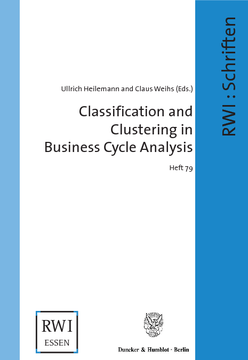Classification and Clustering in Business Cycle Analysis

BOOK
Cite BOOK
Style
Format
Classification and Clustering in Business Cycle Analysis
Editors: Heilemann, Ullrich | Weihs, Claus
Schriften des Rheinisch-Westfälischen Instituts für Wirtschaftsforschung, Vol. 79
(2007)
Additional Information
Book Details
Abstract
The analysis of cyclical macroeconomic phenomena is an important field of econometric research. In the recent past, research interests have de-emphasized quantitative forecasting exercises and have addressed the qualitative diagnosis of the relative stance of the economy regarding »upswing«, »recession«, or »boom« periods, i. e. the classification of the state of the economy into a limited number of discrete states. In this context the principal challenge is to reduce the multifaceted and sometimes abundant quantitative information about the business cycle to such qualitative statements in an efficient way. For more than six years this task was the focus of the project »Multivariate determination and analysis of business cycles« within the SFB 475 »Reduction of complexity in multivariate data structures«, funded by the German Research Foundation (DFG).The necessity for complexity reduction is, of course, not unique to business cycle analysis but is studied in many fields and in a number of ways. This broad interest in the reduction of problem dimensionality and in the appropriate combination of data and of theory caused the RWI Essen and the Statistical Department of the University of Dortmund in January 2002 to hold a workshop at the RWI Essen where the findings of this and similar projects were presented and discussed. The present publication collects revised versions of the papers presented at this workshop. Although the workshop took place some five years ago, these papers mark an importent juncture in the development of business cycle research.
